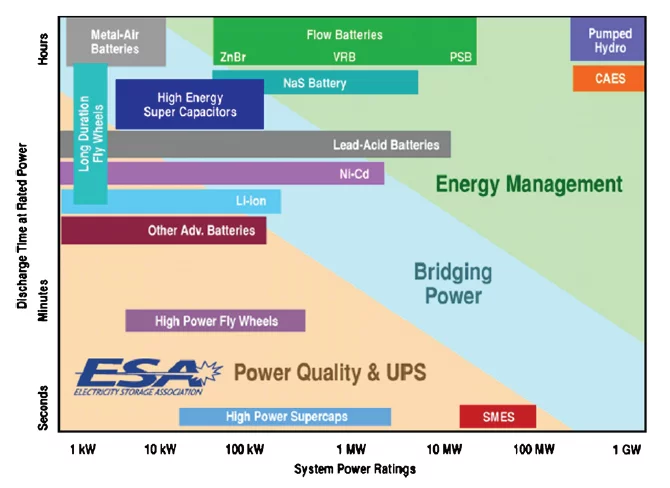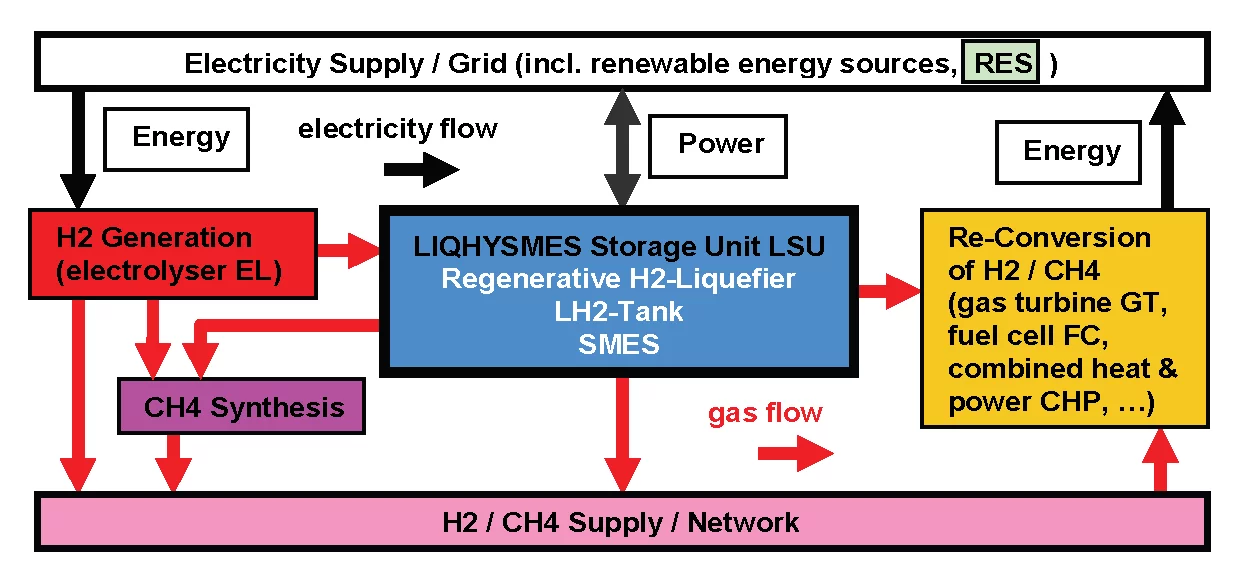EnEfficient - an activity within the European effort
Short term energy storage systems
Task: 3.4
This task is led by KIT.Contact: Michael SANDER at KIT
Interested participants: KIT, CERN, CNRS, GSI.
Electrical energy storage on time scales of seconds up to around a minute can substantially contribute to the safe and efficient operation of accelerators:
Short interruptions of the grid, often only below 1 second, can already lead to unwanted beam aborts, and for large facilities like the LHC it can take many hours to restore the beams and to recover luminosity operation. During the long recovery time often the full grid power is needed, and thus the short interruptions lead to inefficiency. A solution to this problem could be realized by introducing energy storage devices to back up the grid on a short time scale.
Longer-term interruptions are often buffered by diesel engines which typically need up to a minute for ramping up. To bridge this period, a shorter-term energy storage device is needed.
Energy storage at accelerators is even more important for the pulsed operation of high power klystrons or ramped magnets. The negative feedback of a strongly fluctuating high power load on the electricity grid can be avoided by a fast and efficient short-term storage device which continuously takes up an essentially constant power from the grid, stores it on a second time scale and delivers high power pulses e.g. to pulsed magnet systems.
The following devices address especially the short-term energy storage:
Short interruptions of the grid, often only below 1 second, can already lead to unwanted beam aborts, and for large facilities like the LHC it can take many hours to restore the beams and to recover luminosity operation. During the long recovery time often the full grid power is needed, and thus the short interruptions lead to inefficiency. A solution to this problem could be realized by introducing energy storage devices to back up the grid on a short time scale.
Longer-term interruptions are often buffered by diesel engines which typically need up to a minute for ramping up. To bridge this period, a shorter-term energy storage device is needed.
Energy storage at accelerators is even more important for the pulsed operation of high power klystrons or ramped magnets. The negative feedback of a strongly fluctuating high power load on the electricity grid can be avoided by a fast and efficient short-term storage device which continuously takes up an essentially constant power from the grid, stores it on a second time scale and delivers high power pulses e.g. to pulsed magnet systems.
The following devices address especially the short-term energy storage:
- Super- or Ultra-Capacitors
- Superconducting Magnetic Energy Storage (SMES)
- Rechargeable Batteries (e.g. Lead or Lithium Ion Batteries)
- Flywheel Energy Storage
The already existing cryogenic infrastructure like liquefaction plants and/or storage tanks (and the related expertise) could help making superconducting magnetic energy storage (SMES) more cost-effective. In particular, the utilization of liquefied hydrogen (LH2) as an energy carrier of highest volumetric energy density and unlimited availability appears to be promising for large scale stationary storage of excess renewable energy. Then the combination of a SMES and LH2 offers a novel hybrid energy storage option for simultaneously providing long- and short-term power.
The most cost-effective solution will, of course, depend on the application-specific requirements, but a fast and efficient power conversion and control unit plays a key role in all cases.
Such problems are common to many accelerator facilities. The aim of this task is to exchange information and experience gained at different labs with regard to the mentioned problems and to develop potential solutions, for example by utilizing the mentioned SMES.
The most cost-effective solution will, of course, depend on the application-specific requirements, but a fast and efficient power conversion and control unit plays a key role in all cases.
Such problems are common to many accelerator facilities. The aim of this task is to exchange information and experience gained at different labs with regard to the mentioned problems and to develop potential solutions, for example by utilizing the mentioned SMES.
EuCARD-2 is co-funded by the partners and the European Commission
under Capacities 7th Framework Programme, Grant Agreement 312453.




